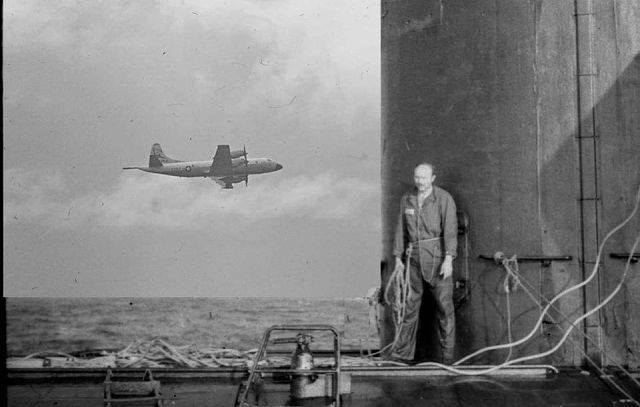Today in 1980, at 2:26am EDT, warning displays at the Strategic Air Command suddenly indicated that a Soviet SLBM attack on the United States was underway, first showing 2 and then, 18 seconds later, 200 inbound missiles. SAC ordered all alert air crews to start their engines. 

Launch officers for 1,000 Minuteman ICBMs were also alerted to be ready to receive an Emergency Action Message (a coded launch order). Three minutes later, duty officers at NORAD determined this was a false alarm because early-warning satellites and radars indicated no attack. 

Before that happened, however, Gen. William Odom, National Security Advisor Zbigniew Brzezinski’s military asst., called him at home, telling him 220 Soviet SLBMs were hurtling toward the United States. Brzezinski told Odom to call back with a confirmation and the likely targets. 

This is according to former CIA Director Robert M. Gates’ 1996 memoir, “From the Shadows: The Ultimate Insider's Story of Five Presidents and How They Won the Cold War,” the only place where this anecdote—as recounted by Brzezinski to Gates—appears. 

When Odom called back, he informed Brzezinski that 2,200 missiles were now on their way—practically the entire Soviet nuclear arsenal. As Brzezinski was preparing to call President Carter with the horrific news, Odom telephoned a third time to convey it was all a false alarm.
We don’t know whether Brzezinski ever went back to sleep that night. But we do know that he did not wake up his wife, Emilie (below), to tell her anything, because he later confided that he preferred she should be asleep when the nuclear warheads rained down on Washington, DC. 

(Declassified contemporaneous notes taken by Gen. Odom published in 2020 by the @NSArchive raise questions about whether the early morning phone call described by Brzezinski ever happened. Brzezinski may have conflated two different nuclear false alarms.) nsarchive.gwu.edu/briefing-book/… 



Even after NORAD declared a false alarm, displays at SAC, the National Military Command Center, and the Alternate National Military Command Center (Site R) continued to intermittently indicate SLBM and ICBM launches. So at 2:39am, the NMCC convened a Missile Display Conference. 

Ten minutes later, with NORAD still assessing the warning data as false, the NMCC escalated to a Threat Assessment Conference. At this point, Pacific Command prepared to send its emergency airborne command post into the air. At 2:53am, CINCLANT incorrectly reported SLBM launches.
At 2:54am, NORAD continued to report no indications of any actual launches. At 2:56am, PACOM—for reasons that remain unclear—scrambled its EC-135 airborne command post, “Blue Eagle,” which would remain aloft for three-and-a-half hours for “routine airborne alert.” 

Here is how this nuclear false alarm looked and felt from the vantage point of a battle staff officer flying aboard Strategic Air Command’s “Looking Glass” EC-135 airborne command post that morning: 



NMCC terminated the conference at 2:57am. The entire incident lasted 31 minutes. A subsequent investigation traced the cause to a defective 46¢ integrated circuit in a NORAD communications multiplexer, which sent test messages on dedicated lines from NORAD to other command posts. 



The test messages were designed to confirm those lines were functioning properly 24/7, and they were formatted to resemble an actual missile attack warning, including its size. The false alarm was triggered when the defective circuit randomly inserted “2’s” in place of “0’s.”
Later that month, the Department of Defense tried to downplay the incident—and a second similar false alarm three days later when technicians recreated the June 3 incident in order to diagnose it—and reassure the public by arguing that ~50 previous alerts in 1979 were all valid. 

• • •
Missing some Tweet in this thread? You can try to
force a refresh


























